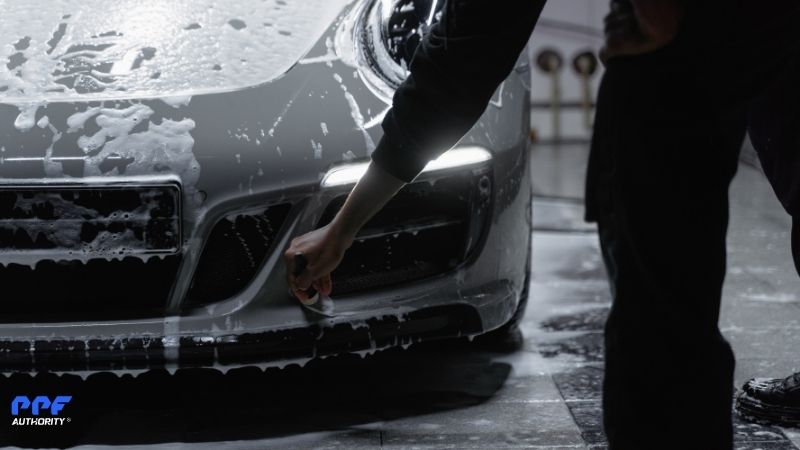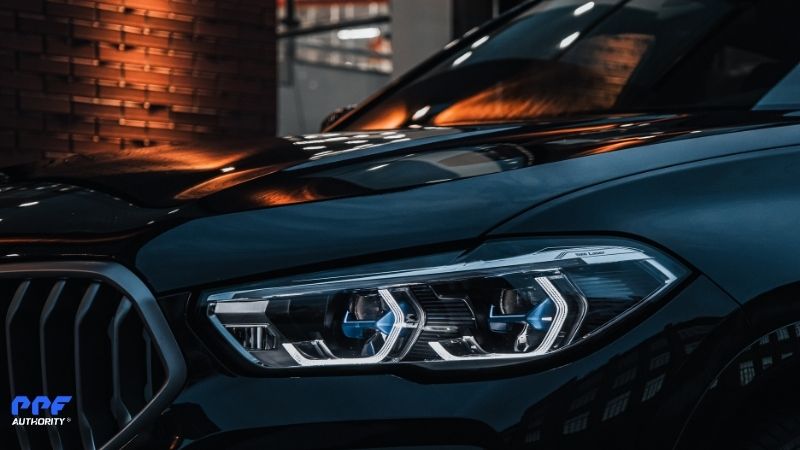Car enthusiasts and vehicle owners are constantly looking for ways to protect their cars and maintain that showroom shine. One of the most talked-about solutions in automotive care is ceramic coating. But what exactly is ceramic coating, and how does it work?
In this guide, we’ll break down everything you need to know about ceramic coating, including how it works, its benefits, and why it’s a game-changer for protecting your car’s paint.
Understanding Ceramic Coating
What Is Ceramic Coating?
Ceramic coating is a liquid polymer that chemically bonds with your car’s paint to create a durable, protective layer. Once applied and cured, it forms a semi-permanent shield that protects the vehicle’s exterior from damage caused by environmental contaminants, UV rays, and minor scratches.
Unlike traditional waxes or sealants that sit on top of the paint, ceramic coatings create a molecular bond, offering long-lasting protection that doesn’t wash away easily.

How Does Ceramic Coating Work?
The science behind ceramic coating lies in its primary ingredient: silicon dioxide (SiO₂), often derived from quartz or sand. High-quality ceramic coatings also include additional compounds like titanium dioxide (TiO₂) for added durability and hydrophobic properties.
When applied to your car’s surface:
- The liquid coating fills microscopic imperfections in the paint.
- It bonds with the paint at a molecular level, forming a hard, transparent layer.
- Once cured, the coating becomes a protective barrier that enhances gloss and repels water, dirt, and contaminants.
Benefits of Ceramic Coating
Ceramic coating offers a wide range of benefits that make it a popular choice for car owners.

1. Enhanced Protection
Ceramic coating creates a shield that protects your car’s paint from:
- UV Rays: Prevents oxidation and fading caused by prolonged sun exposure.
- Chemical Contaminants: Resists damage from bird droppings, tree sap, bug splatter, and road salt.
- Minor Scratches: Adds a thin, hard layer that can reduce the impact of small abrasions.
2. Hydrophobic Properties
One of the most notable features of ceramic coating is its hydrophobic effect, which repels water, dirt, and grime. This makes your car easier to clean and reduces the likelihood of water spots and stains.
3. Long-Lasting Shine
Ceramic coating enhances the gloss and depth of your car’s paint, giving it a showroom-like finish. Unlike wax, which needs to be reapplied frequently, ceramic coating maintains its shine for years.
4. Low Maintenance
With ceramic coating, you’ll spend less time washing and waxing your car. The hydrophobic properties prevent dirt and contaminants from sticking, making routine cleaning faster and easier.
5. Resale Value
A well-maintained car with a ceramic coating often retains its value better because the coating preserves the paint and enhances the car’s overall appearance.
How Long Does Ceramic Coating Last?
The longevity of a ceramic coating depends on the quality of the product and how well it’s maintained.
- Consumer-Grade Coatings: Typically last 1–2 years.
- Professional-Grade Coatings: Can last 5–7 years or more with proper maintenance.
Factors that affect longevity include:
- Driving conditions (e.g., exposure to harsh weather or road debris).
- Frequency of washing and maintenance.
- The quality of the installation process.
Ceramic Coating vs. Wax and Sealants
Many car owners wonder how ceramic coating compares to traditional waxes and sealants. Here’s a quick breakdown:
| Feature | Ceramic Coating | Wax | Sealant |
| Durability | 1–7 years | 1–3 months | 6–12 months |
| Protection | High (UV, chemical, and minor scratches) | Moderate (limited to UV and water) | Moderate (better than wax) |
| Hydrophobicity | Excellent | Moderate | Good |
| Gloss Enhancement | High | Moderate | Good |
| Maintenance | Low | High (frequent reapplication) | Moderate |
Ceramic coating provides superior protection, durability, and performance, making it a worthy upgrade over traditional waxes and sealants.
How Is Ceramic Coating Applied?
Applying ceramic coating requires precision and careful preparation to achieve the best results.

Steps for Professional Application
- Wash and Decontaminate: The car is thoroughly washed and decontaminated using a clay bar to remove dirt, grime, and embedded contaminants.
- Paint Correction: Any scratches, swirl marks, or imperfections are removed through polishing to ensure a flawless base.
- Apply the Coating: The ceramic coating is applied in small sections using an applicator pad, then wiped off with a microfiber towel to prevent streaks or haze.
- Curing Time: The coating is left to cure, forming a strong bond with the paint. This process can take several hours to a few days, depending on the product.
Common Misconceptions About Ceramic Coating

1. It Makes Your Car Scratch-Proof
Ceramic coating adds a layer of protection, but it doesn’t make your car completely scratch-proof. It can reduce the impact of minor abrasions, but deeper scratches can still penetrate the coating.
2. It Eliminates the Need for Washing
While ceramic coating repels dirt and water, regular washing is still necessary to maintain its effectiveness and appearance. However, washing becomes much easier and less frequent.
3. It’s the Same as PPF
Ceramic coating is not a replacement for Paint Protection Film (PPF). PPF provides a thicker, physical barrier against rock chips and scratches, while ceramic coating primarily enhances gloss, hydrophobicity, and UV protection.
Who Should Consider Ceramic Coating?
Ceramic coating is a great option for:
- Car owners who want long-lasting protection and reduced maintenance.
- Those looking to enhance their car’s gloss and appearance.
- Anyone who wants to preserve their car’s paint and resale value.
How to Maintain a Ceramic Coating

To keep your ceramic coating performing at its best:
- Wash Regularly: Use pH-neutral car shampoo and the two-bucket method to prevent scratches.
- Avoid Harsh Chemicals: Don’t use abrasive cleaners or degreasers.
- Use Ceramic Boosters: Apply a ceramic spray or sealant periodically to maintain hydrophobic properties.
- Avoid Automatic Car Washes: Hand washing is best to avoid damaging the coating.
Conclusion – Is Ceramic Coating Worth It?
Ceramic coating is a revolutionary product that provides long-lasting protection, enhances your car’s appearance, and reduces the effort needed to maintain its paint. While it requires an upfront investment, the benefits far outweigh the costs, especially for car owners who value aesthetics and longevity.
Whether you’re a car enthusiast or simply want to protect your investment, ceramic coating is an excellent choice for keeping your vehicle looking like new for years to come. If you want professional results, consult with a certified installer to ensure the coating is applied correctly.
